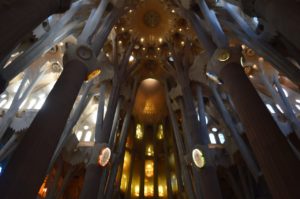
July 19, 2017
Almost all of architecture throughout history has been an effort to create something from the hands of man, that stands in stark contrast against the nature around it, that is separate from the elements and the earth. Buildings are meant to be strong and permanent, to withstand time and guard against the elements. In my Spanish Art and Architecture class we detailed ancient stone dwellings found in the Iberian Peninsula, the short stout romanic architecture of the middle ages, gothic architecture meant to be tall and ornate, divine rather than worldly. Although all of the movements were distinct they followed this same paradigm that building is to be in contrast to nature.
That is why Antoni Gaudí’s modernism was so revolutionary. It was a completely different conception of what architecture should be. Gaudí said “originally consists of returning to the origin”. He took all of his inspiration from nature and therefore his building were meant to be a part of this nature, rather than an opposition to it. In the age directly following the industrial revolution, this was so radical and so different from the utilitarian factories, gray skyscrapers, and other architectural trends of his era. In his houses, churches, parks, and palaces, he uses curved lines, stained glass, abstract forms that recall animals and plants, bright colors along with earthy tones, and a special mosaic technique called trencadis, in Catalan, where he takes mosaic tiles, breaks them into pieces and reassembles then in a much less manufactured manner.
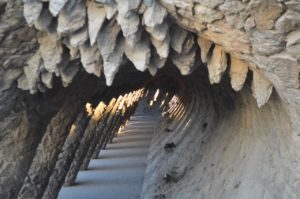
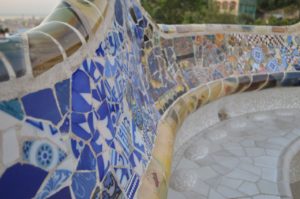
Looking at Gaudís modernist building, especially La Sagrada Familia, was the first time that I had considered that a building, rather than serving a utilitarian purpose, can actually be a giant, livable sculpture, a perfect piece of art, with every detail having a specific, premeditated meaning. On the nativity facade of La Sagrada Familia, every carving into the stone serves a specific purpose in telling a story of the Bible. In the interior he uses columns to appear as a forest within the church and created a complicated buttressing system that used branches to direct all weight down through these large trunks. The details of the stain glass windows make allusions to holy sites throughout Catalunya and Spain, and the numbers and patterns that he uses throughout are all of a holy origin. It is truly a work of pure genius (of course this is no radical or original statement, but the popular conclusion)
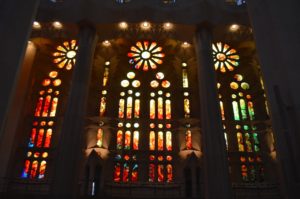
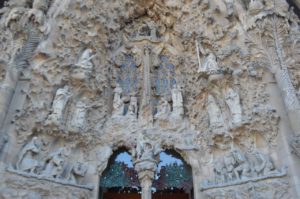
In learning about the history of art and architecture in the Iberian peninsula and then actively exploring these famous sites throughout Catalunya I have developed a much greater understanding and appreciation of this artform. I have developed an incredible vocabulary to talk about art and describe artistic trends, which I otherwise would have likely never learned. Being able to discuss and explore the life and philosophy of Antoni Gaudí through one of his mother tongues has been an experience that will truly bring one back to the origins.